Designing a New HVAC System during Rehab of Dome Home
Hello,
I am doing a major rehab on a concrete dome home I bought last year. I am trying to decide on the best solution for an all new HVAC system which has been a challenge, so I am hoping to mobilize the experience and brainpower here to help point me toward the best solution. I will try to provide clear info below — I hope this isn’t too much. I’m missing anything just let me know. I’m working hard to come to an educated decision and move forward with it.
Quick Video Walkthrough of main level: https://drive.google.com/file/d/1v-5jJn-EMbh31CSDhQ5UfAyDntygSzol/view?usp=sharing
Floorplans also attached. I appreciate your time and input!
Some info about the house:
–Built in 1982
–~4,000 square feet: 1,600 sq ft finished basement, 1,600 sq ft main floor, 700 sq ft loft
–Basement is separated into separate 2 BR / 2 BA unit
–Main Floor / Loft is a 3 BR / 3 BA unit
–Located in Evergreen, CO. Elevation 7,700 ft. ASL (Climate Zone 5?)
–Monolithic (concrete) dome construction — supposed to be quite airtight and well insulated, and does appear to be
–Current outside temps are ~85 F high, 60 F low and inside temp stays steady at 62-63 in basement, 68-69 on main level, 72-73 in loft)
–Original plans indicate minimum concrete thickness of 2″, minimum urethane spray foam thickness of 3.5″, and minimum R value of 20. (extra foam thickness appears to be sprayed on top/roof) (see attachment)
–Original plans reference “Energy Conservation Criteria” in the main floor/loft of 15,627 BTU/h with inside temp of 72 F when outside temp is 0 F (see attachment)
–Originally had a SolaRoll hydronic radiant heating system but it is 40+ years old now and has various signs of failures so I don’t believe it would be smart to try and rely on this for the next 10-20 years and am looking into implementing an all new HVAC solution while I am doing the rehab now
**I need heat and will be the majority of the load, I want AC and will only require light use (main unit will be a rental and renters expect AC)
**The house has no existing ducting or provisions for it
**The basement will be a separate unit and I assume it will have different cooling/heating needs so some type of zoning would be helpful
**Basement ceiling height is 7.5′ and I would like to preserve as much ceiling height as possible
**Original doors will be replaced, TBD if I am also replacing full windows or just the insulated units for now. Windows are pretty minimal in the house overall though.
**I am framing out the concrete basement walls with 2x4s and adding R15 insulation. I do not believe there is any insulation or vapor barrier in the floor / slab in the basement but it was finished originally and had a wet bar and bathroom
**I would like to add solar to the home in 3-5 years once the dust settles from this rehab project
****I have also included a screenshot of the basement layout which includes the 9″ wide by 13″ tall gluelams that drop down from the ceiling highlighted in red. It also shows a rough idea of what I thought would be the most logical ducting design shown in blue. The main supply and return lines would run through the bedrooms, but I still don’t have much ceiling height to spare. (Floor joists are 2″ x 10″ and run from top to bottom in the screenshot.) ****
I have spoken with a variety of HVAC contractors and a handful have come out to the property. I have asked what they recommend as a best solution given the situation and the things I am asking for. I am trying to balance budget and performance but do not want to compromise the comfort of the home in any illogical way and am looking for a good, long term solution. Everyone has a wildly different opinion with what system they’d like, including traditional forced air, radiant, ductless mini splits, high velocity, Rheia, and probably some I am forgetting. Even so, most never follow up again after their site visit.
I have found that many HVAC contractors seem to carry biased opinions based on what they’re familiar with and what they aren’t. I’m trying to dig deeper than that and really educate myself on the options available in the most objective way possible, and come up with an informed, educated decision on what path to take. I have an incredibly talented friend who used to do HVAC work and has offered to help with the install so ideally I am trying to do my homework, get proper design work done, then source the materials and handle the install myself.
Handful of initial questions:
1) Can mini splits effectively solve whole home heating/cooling and offer a comfortable environment, including infrequent but possible outside temps of -15 F? Can I put a larger unit in the main open areas and small units in each bedroom?
2) Is there a ducted solution that can maintain reasonable ceiling height in the basement and be a better all around solution than going ductless?
3) Maybe just go radiant again for heating and stick a single mini split in the common area of the main floor and the basement to take the edge off in the summer?
4)What great ideas do you have that I haven’t thought of? I’m open to any and all creative ideas… 🙂
So happy to have found this website and this community, thanks again for your time!
GBA Detail Library
A collection of one thousand construction details organized by climate and house part


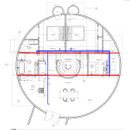


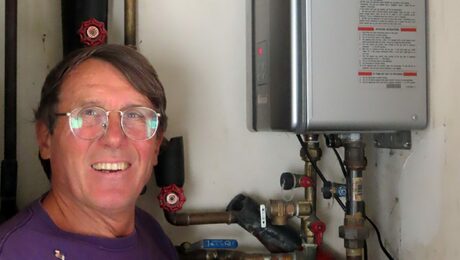
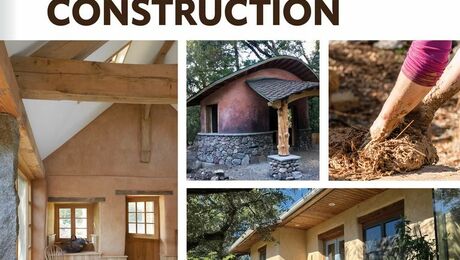
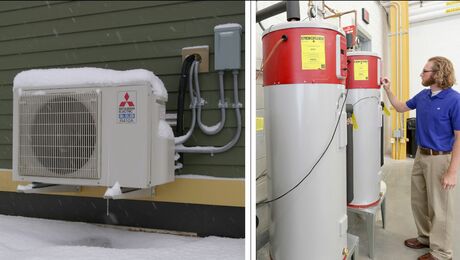
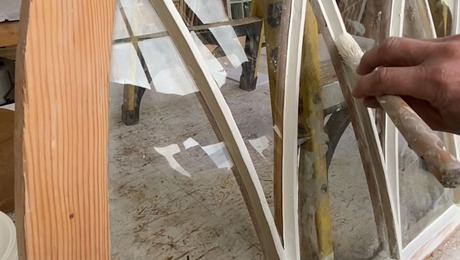
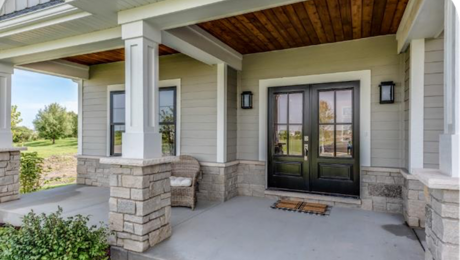
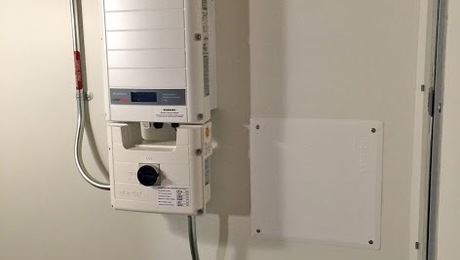
Replies
Please tell us about your current heater and why you are unhappy with it. Is it a gas fired boiler they tend to live very long lives another 40 years of service would not be impossible.
I think a miny split head by the stair case could do a reasonable job of cooling the space.
I doubt the basement needs a separate system as basements tend stay close enough to the rest of the home to be acceptable.
Walta
Thank you Walta, good question.
I had posted on HeatingHelp previously and there is pretty good discussion with some who have experience with these older SolaRoll hydronic systems there along with photos if you’d like to check it out: https://forum.heatinghelp.com/discussion/189925/solaroll-radiant-heating-from-1982-possible-to-repair-maintain-and-keep-reliable-or-abandon#latest
Cliffs Notes:
-I’d love to keep the system, if I could plan on it being reliable, however I don’t know if I could count on that
-SolaRoll uses small diameter 1/4” soft rubber tubing that was revolutionary in its day, but does not have an oxygen barrier and is prone to corrosion/sludge as a result that can damage the boiler and clog the rubber loops.
-system is 40 years old, I’ve been advised that is last the life expectancy of this type of tubing
-the tubing is poured into the basement slab (no insulation beneath) and poured into 1.5” of concrete on the main floor
-there are 4 zones in the system: 2 in the basement and 2 on the main floor. None in the loft as fas as I know.
-I see that some of the rubber tubing near the manifolds is not in great shape and even if that was repaired where accessible I don’t know if I could trust the tubing inside of the concrete
-there is a minitherm gas boiler in place but it was left to freeze and leaks when you send water to it so it likely needs to be replaced
-it is recommended to use a heat exchanger to protect the boiler from the oxygen/corrosion in the rubber loops and non-ferrous metals throughout the system
If you want air conditioner you need something with a blower, your choices are traditional ducted, ducted minisplit, and unducted minisplit. Unducted minisplit seems tempting because you can skip the ducts, but it seems like you have a lot of small rooms which would be poorly suited to that choice.
Unless you have space where you can put in a vertical chase traditional ducted probably isn't going to work. I would look at ducted minisplits first, one head on each floor. Often what you can do is drop the ceiling in the hallway and have the ducts come out in the wall of each room.
Any cooling choice can also provide heating. In most places the cooling load is smaller than the heating load, so if you size it for cooling you have to add heat another way. You can size it for heating and have it be oversized for cooling, or you can have some sort of auxiliary heat.
I have 2 bedrooms and 1 large open common area in the basement.
I have 2 bedrooms and 1 large open common area with high ceilings on the main level.
I have 1 bedroom on the second floor, plus loft space that is open to the main floor common area.
Then I have 5 bathrooms total.
I figured if I went ducted then I would run the main ducting along the ceiling of the basement which would provide ceiling vents in the basement and also floor vents in the main floor. There are 2 closet spaces I could use for vertical chases to get up to the loft, plus possibly running a return inside a 2x4 wall in between studs that are 16" on center.
The catch with this is will my main ducting trunk lines completely ruin the ceiling headroom in the finished basement which has a starting ceiling height of 90"? Is there any way to maintain a reasonable headroom in the basement with a ducted system?
In short you now have no operational heating system and come to the conclusion the tubing imbedded in the concrete is not useable going forward.
If you want to make that call no one could say you are wrong but I might decide to ride the horse until I am sure it is dead.
Consider a ducted mini split on the first floor shown in green using the blue ductwork install in bulkheads near the first floor ceiling.
Walta
Do you have any experience or thoughts on trusting the original tubing in the concrete?
The two questions that come to mind are:
1) Is the tubing inside the concrete any more stable/reliable than the exposed tubing?
2) If it fails after I complete a full rehab, what would that mean as far as possible water damage to the home, being without heat until a new system could be installed, and impact on the home to install an all new system after the rehab has been completed?
I'd love to have radiant heat and pull it off for much cheaper than a new system, but I am also trying to choose the smart long term solution so I don't kick myself later.
If I were to keep this system I would need a new boiler with a heat exchanger, and to do pressure testing and cleaning of the existing lines -- and possibly replace/rebuild the manifolds. It may be possible, but just want to make sure I'm not being penny wide and pound foolish in the long run.
The image you grabbed is actually the basement floorpan where I had planned to run ducting along the ceiling of the basement to serve vents in the basement ceiling as well as the main floor through the floor. I hadn't considered any ducting running across the main level but I am not opposed to it if its presents a solution. I'll stare at floorplans for a bit and see if I can find a path forward with that option.
One of the advantages of 'ducted' minisplits is the ability to use several units to minimize ducting.
Consider electric heaters: hot air or floor radiant in the baths, you really don't need to run ac there particularly
The heating help guys are right, you could recommission the existing heat, but need a heat exchanger to prevent damage to the system, but then you don't get AC
If your fuel use numbers match the heat loss from the original plans than you don't need all that much HVAC in there. This is a good thing as any ducting will be pretty small.
It also means your heat loss is so low that any multi split system with a pile of heads are defiantely a non-starter.
The high velocity option is the easiest to retrofit but they can be spendy. You can pair the high velocity air handler with a cold climate outdoor unit would definately work.
For the basement, I would stick to a single wall mount mini split on its own outdoor unit in the living space plus resistance heat for the bedrooms and bathrooms. At your loads, this most likely would only need to be a 1/2 ton cold climate unit something like this:
https://ashp.neep.org/#!/product/34424/7/25000///0
If you don't want to go with high velocity, you can go with a slim ducted unit. The nice part about these is they are very small, you can mount it somewhere in a closet in the loft and run ducting to heat the main floor. With the 15k loss number, this would be in the ballpark:
https://ashp.neep.org/#!/product/34564/7/25000///0
If the 15k is correct, this would carry the place without any supplemental heat even when 0F out.
I would be a fool to disagree with the experts on heating help and do not have the answers to your questions about how and when the tubing will leak.
I have some experience with copper tubing imbedded in concrete we had a few leaks over the years. The first symptom was the boiler water level would drop and the auto refill valve would open to replace the water and we would hear that valve open. Then we would find a damp spot on the floor make a hole and fix the leak. That house had no basement so it was not a big deal. We had valves that allowed us to isolate a leaking zone and still operate the other zones.
If you are worried about clogs it seems like a filter of some kind could be installed.
The system seemed to have functioned for years with tubing that lacked oxygen barrier I don’t see any reason it could not again.
The big questions are can you find someone willing to work on the system and will you pay them given no guarantee of success. A $500 used craigs list boiler might be useful for testing.
I did a Google search on SolaRoll and it's EPDM. That's a very durable substance. I wouldn't be afraid to keep using it. If it isn't an oxygen barrier you just can't use it with iron or steel but there are ways around that.
I posed that question to the heating help forum and the consensus was that I would be taking a big risk if I planned to rely on it for 10+ more years, and my concern is what happens when it does fail? No big deal or big deal? Repairing that system but also would I then have to install an all new heating system and tear into a house that was "recently" fully rehabbed?
No one has the answer, I know... I would be totally happy with keeping that heating system in place but just don't want to kick myself if it creates a bigger problem when it fails.
Also, here's a quick video showing the space -- I think this is helpful to see the main floor layout and give an idea of the space.
If it helps I can also take a quick video of the basement and show where the mechanical room would be.
https://drive.google.com/file/d/1v-5jJn-EMbh31CSDhQ5UfAyDntygSzol/view?usp=sharing
If you already have drywall up, the ship has sailed for new HVAC.
I would do a leak test of the existing setup and if still hold pressure get a new boiler in there.
Any of the multi zone ductless wall mount options will simply not work in your low load home.
The basement is down to the studs everywhere so a good time to run ducting if I go that route. Ducting in the basement ceiling could serve both the basement (ceiling vents) and main floor (floor vents). I could also create a couple vertical chases to go up to the loft from there through closet spaces.
The main floor was able to keep most of the drywall but it needs a lot of skimming and smoothing so now would be the time to get into it if needed. Main floor ceiling height is 93" so not much more than the basement actually.
Believe me, I am tempted to reuse the tubing already in the floors, but can I plan on that lasting 10-20 more years or longer? That answer seemed to be no from the heating help guys which is what I based my decision off of. If I could get reasonable dependability out of it then I do agree its worth considering since there are no clear easy winners with any other system.
Hey all, appreciate the time you've taken to respond -- I wanted to ask what you thought of this 'hybrid model' which might best solve my situation.
For a non-ducted solution that provides plenty of heat and at least a little AC, what if I put individual mini splits in the main area of the basement, the main area of the main floor, and one in the loft bedroom which runs warmer than the rest of the house. I will have a ceiling fan in the main area of the main floor/loft, and I could utilize transfer fans/vents to help circulate air into the bedrooms (are these an effective solution?).
Then I could also either have electric or radiator heat in the bedrooms as well to supplement the heating needs and make sure they can stay at a comfortable temp. I am hoping the loads on these would be minimal.
Then I would also be able to push some AC into the house as well via the mini splits just to take the edge off in the summer. Not much is needed but a little would be nice.
Love this idea or hate it?
If its viable, would you expect the supplemental bedroom heating loads to stay pretty minimal and that the main area mini splits would do most of the heavy lifting?
With regards to the question above, thoughts on cheaper to install but more expensive to run electric heating in the bedrooms vs a boiler based system? I could buy a used boiler and will be doing electrical and plumbing myself. Not sure what bedroom radiator solution would be best for either electric or boiler though.
I hope to own the home for 20+ years so I am trying to consider my initial costs vs my long term costs.
Thanks!
Bryan
What you are proposing is a good budget alternative. You still have to size the units correctly and in your low load homes this does mean staying away from multi splits. This is a good thing for something like your basement ADU as it has its own HVAC equipment that can be sub metered.
With your open plan, I would size the main floor unit to handle the full heating load of the rest of the house as it will be providing that most of the time. The 2nd floor unit is mostly needed for cooling, so you can save a bit of cost by not getting a hyper heat unit there.
If your basement is open, instead of a wall mount for the main floor, a slim ducted unit for the main floor might be better as you can get airflow distribution to the perimeters. This doesn't have to be anything fancy, a handful of home run flex ducts to a duct board on the unit is good enough.
The cost of heating the upstairs bedrooms at night time when the doors are closed with electric baseboards in your case is so small that any expensive equipment ROI is pretty much never.